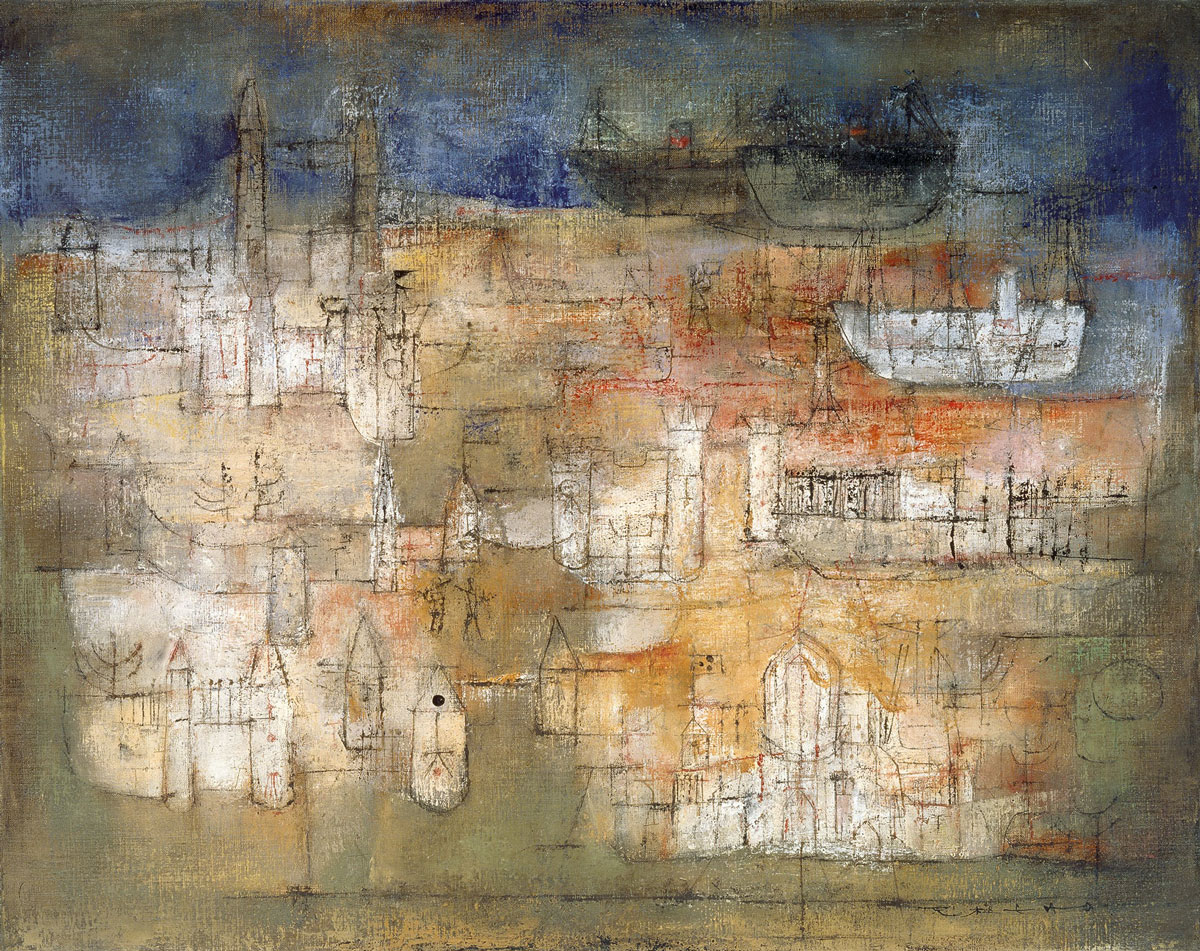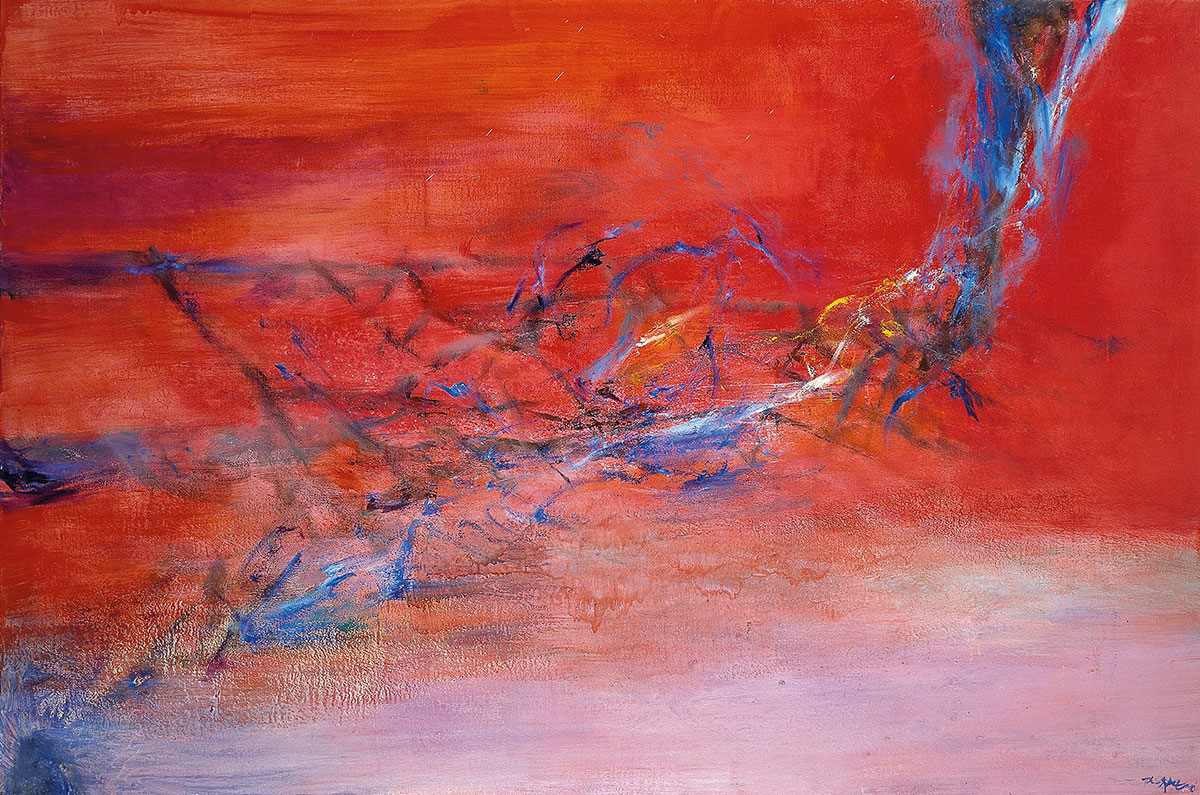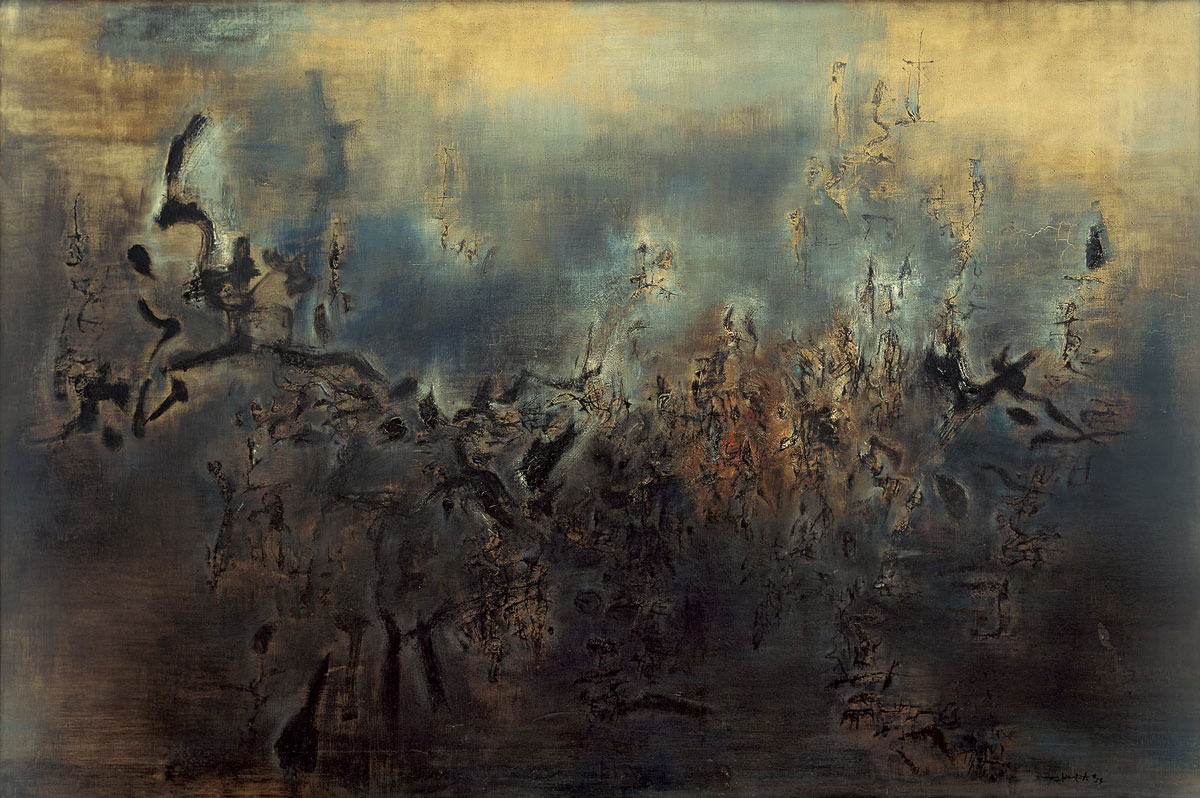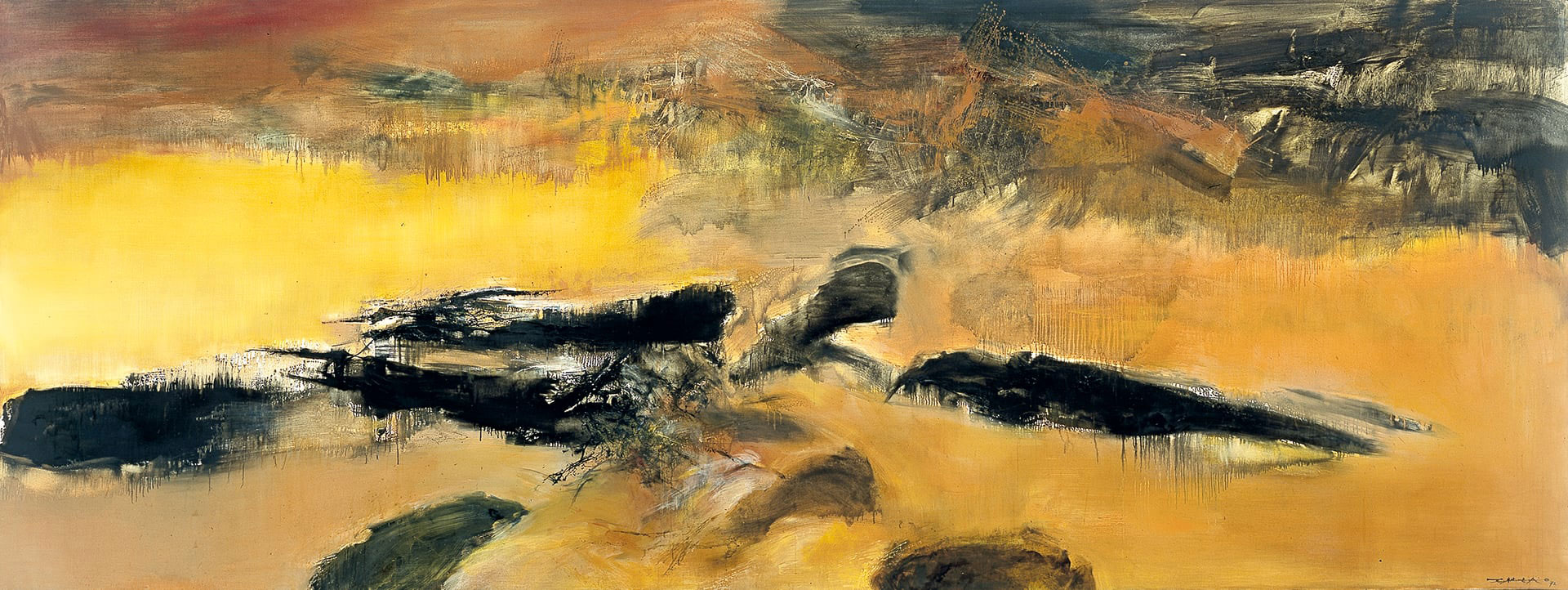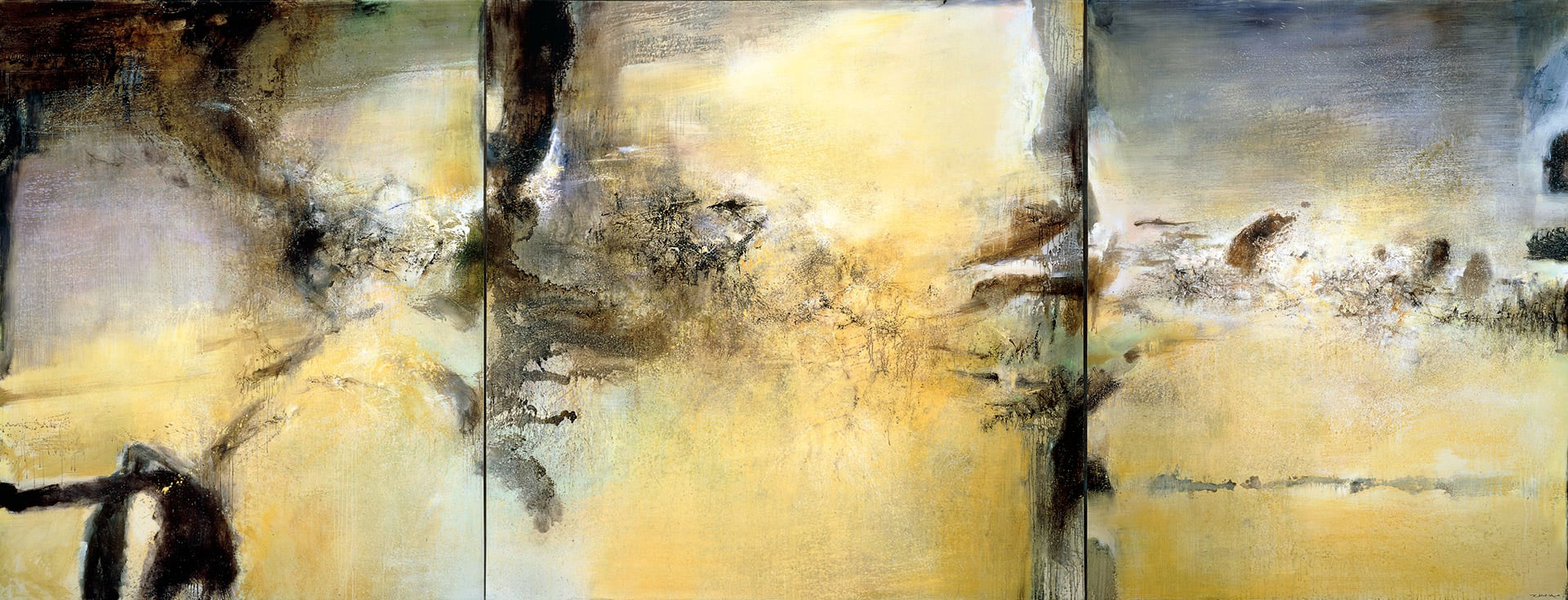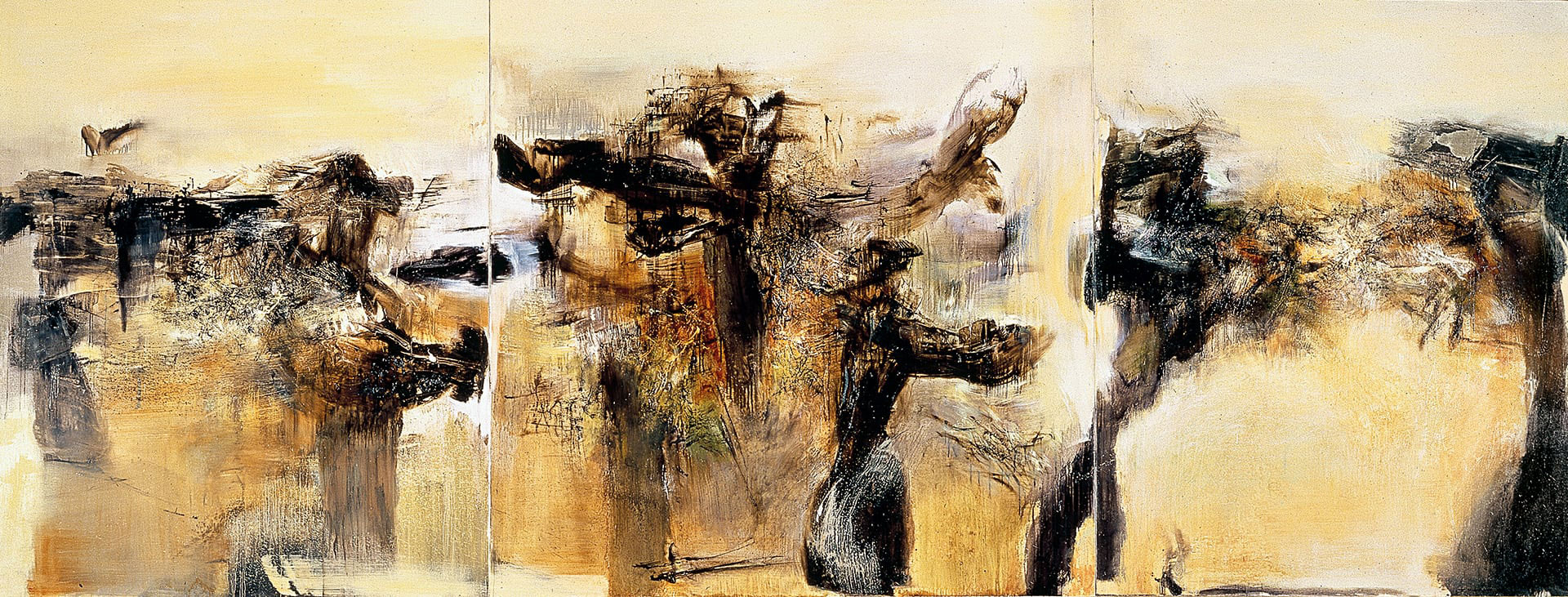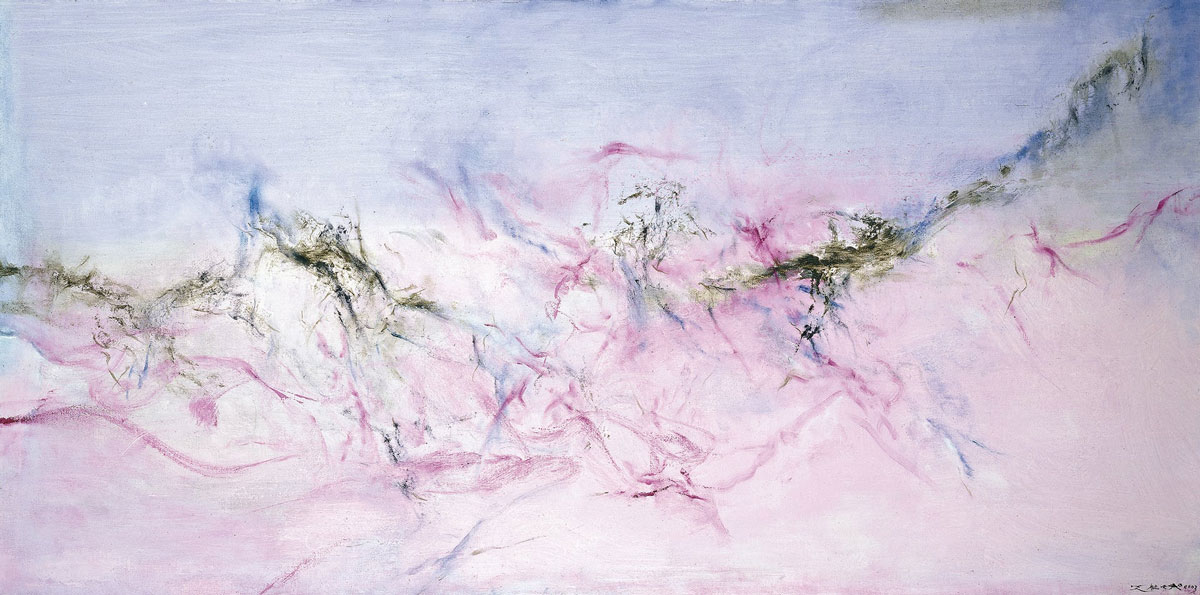TRACES: Zao Wou-Ki
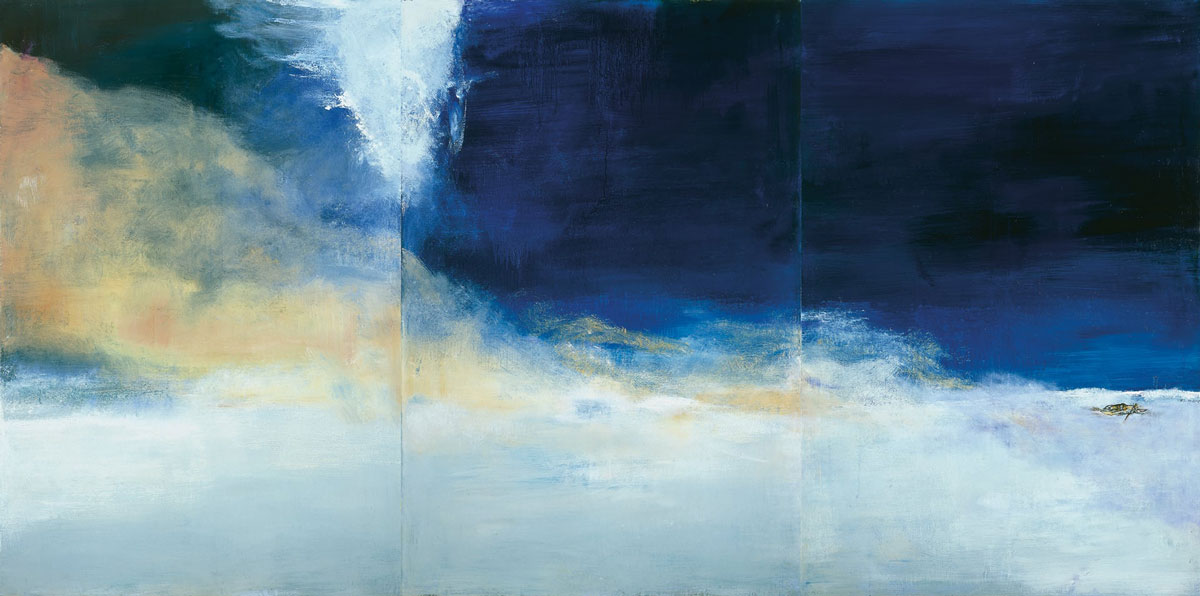 Today is the occasion to bear in mind Zao Wou-Ki (13/2/1921-9/4/2013) is among the most recognized Chinese artists in the world. Born in Beijing, he attended the National School of Arts in Hangzhou in 1935, where he became a drawing instructor in 1941. In both his schooling and teaching domains, Zao moved freely between Chinese painting techniques and Western-inspired abstract compositions and found a profound affinity between the two traditions. Through documents or interviews, starting with: moments and memories, we reveal out from the past-unknown sides of big personalities, who left their indelible traces in time and history.
Today is the occasion to bear in mind Zao Wou-Ki (13/2/1921-9/4/2013) is among the most recognized Chinese artists in the world. Born in Beijing, he attended the National School of Arts in Hangzhou in 1935, where he became a drawing instructor in 1941. In both his schooling and teaching domains, Zao moved freely between Chinese painting techniques and Western-inspired abstract compositions and found a profound affinity between the two traditions. Through documents or interviews, starting with: moments and memories, we reveal out from the past-unknown sides of big personalities, who left their indelible traces in time and history.
By Dimitris Lempesis
 Zao Wou-Ki Was born in Beijing in February, 1920. According to Chinese documents, he was born on the 13th; on his French naturalisation documents his birthday was noted at the 1st. His family moved to Shanghai a few months later. He was born into the T’chao family, descended from the Song dynasty. When he arrived in France, T’chao Wou-Ki became Zao Wou-Ki, with Wou-Ki as his given name. The family lived in Nantung during his childhood, a small town north of Shanghai, where his father was a banker. He completed primary school and three years of secondary education. At 15, Zao Wou-Ki passed the entrance exam for Hangzhou School of Fine Arts, where he spent six years learning from both Chinese and Western teachers. He broke free from the curriculum early on, to start painting with oils. In 1938, the School of Fine Arts moved from Hangzhou to Chongqing, ahead of the Japanese invasion. After graduating, Zao Wou-Ki worked as an assistant teacher at the school. He held his first personal exhibition in Chongqing. During this time, he was very influenced by Cézanne, Matisse and Picasso, working from postcards his uncle brought back from Paris or reproductions published in American magazines that he bought in bookshops of the French Concession. In 1947 After a solo exhibition in Shanghai, Zao Wou-Ki decided to move to Paris, to further his artistic studies, with his father’s blessing. With his wife he took a small studio in Montparnasse, with Alberto Giacometti as a neighbor. He learnt French at the Alliance Française and frequented the Académie de la Grande Chaumière. He would later say that it was in Paris that he discovered his true personality. His cosmopolitan group of new friends included American artists Sam Francis, Norman Bluhm and Joan Mitchell; Canadian artist Jean-Paul Riopelle, Portuguese painter Maria Helena Vieira da Silva, German painter Hans Hartung and the French painter Pierre Soulages In January 1951, gallerist Pierre Loeb visited Zao Wou-Ki’s studio on the advice of Henri Michaux. The first exhibition of Zao Wou-Ki’s works at his Galerie Pierre was held in June, the beginning of a collaboration that would last until 1957. Zao Wou-Ki was introduced to the work of Paul Klee during a trip to Switzerland. Through Klee’s work, he discovered another approach to painting, one full of symbolism, that inspired him to move towards abstraction. 1953 would see a shift in style: “No more still lifes or flowers, I am aiming for an imaginary and indecipherable new writing”. In the fall of 1957 y 1959, Zao was no longer naming his works, but instead titled them with the date of their completion as a way to avoid ascribing overt visual associations. Combining the gestural movements of traditional calligraphy with the compositional structure of abstract painting, Zao’s works of the late 1950s represent a transitional phase between the early oracle-bone style and his more energetic style of the 1960s. As Zao’s works grew increasingly abstract during the 1960s he began to move away from the detail-heavy style that characterised his oracle-bone period towards a bolder, more energetic mode of painting. Zao’s initial exposure to Western modernist painting led to a rejection of the classical conventions of Chinese calligraphy and landscape painting. By 1971, however, he had returned to the brush-and-ink technique in which he was trained in China, with work that reflected its sources in Chinese traditions but also his conceptual roots in Western abstraction. In 1959 Zao Wou-Ki bought a house with a garden in rue Jonquoy, separated from the street by a warehouse which he had had converted into a studio by the architect Georges Johannet (who had also designed a studio for Vieira da Silva). He now worked in this large sparse room lit by a glass roof, his tranquillity undisturbed, as it had no opening onto the street. The finished canvases were turned to face the walls. Their titles disappeared, replaced by dates that simply indicated when the work had been completed. His painting became more fluid, marked by the passing seasons. Michel Ragon considered that Zao Wou-Ki drew this “abstract landscape” from deep inside himself. In 1982, he was invited to paint for the Fragrant Hills Hotel in Beijing, designed by I. M. Pei. I. M. Pei had a fellowship to Europe in the early 1950s and he met Wou-Ki at Galerie Claude Bernard, the gallery that represented Wou-Ki. In 1983, he returned to his alma mater, the China Academy of Art in Hangzhou to give lectures. By the end of his life Zao had stopped producing new paintings due to health problems. He died on 9/4/2013 at his home in Switzerland.
Zao Wou-Ki Was born in Beijing in February, 1920. According to Chinese documents, he was born on the 13th; on his French naturalisation documents his birthday was noted at the 1st. His family moved to Shanghai a few months later. He was born into the T’chao family, descended from the Song dynasty. When he arrived in France, T’chao Wou-Ki became Zao Wou-Ki, with Wou-Ki as his given name. The family lived in Nantung during his childhood, a small town north of Shanghai, where his father was a banker. He completed primary school and three years of secondary education. At 15, Zao Wou-Ki passed the entrance exam for Hangzhou School of Fine Arts, where he spent six years learning from both Chinese and Western teachers. He broke free from the curriculum early on, to start painting with oils. In 1938, the School of Fine Arts moved from Hangzhou to Chongqing, ahead of the Japanese invasion. After graduating, Zao Wou-Ki worked as an assistant teacher at the school. He held his first personal exhibition in Chongqing. During this time, he was very influenced by Cézanne, Matisse and Picasso, working from postcards his uncle brought back from Paris or reproductions published in American magazines that he bought in bookshops of the French Concession. In 1947 After a solo exhibition in Shanghai, Zao Wou-Ki decided to move to Paris, to further his artistic studies, with his father’s blessing. With his wife he took a small studio in Montparnasse, with Alberto Giacometti as a neighbor. He learnt French at the Alliance Française and frequented the Académie de la Grande Chaumière. He would later say that it was in Paris that he discovered his true personality. His cosmopolitan group of new friends included American artists Sam Francis, Norman Bluhm and Joan Mitchell; Canadian artist Jean-Paul Riopelle, Portuguese painter Maria Helena Vieira da Silva, German painter Hans Hartung and the French painter Pierre Soulages In January 1951, gallerist Pierre Loeb visited Zao Wou-Ki’s studio on the advice of Henri Michaux. The first exhibition of Zao Wou-Ki’s works at his Galerie Pierre was held in June, the beginning of a collaboration that would last until 1957. Zao Wou-Ki was introduced to the work of Paul Klee during a trip to Switzerland. Through Klee’s work, he discovered another approach to painting, one full of symbolism, that inspired him to move towards abstraction. 1953 would see a shift in style: “No more still lifes or flowers, I am aiming for an imaginary and indecipherable new writing”. In the fall of 1957 y 1959, Zao was no longer naming his works, but instead titled them with the date of their completion as a way to avoid ascribing overt visual associations. Combining the gestural movements of traditional calligraphy with the compositional structure of abstract painting, Zao’s works of the late 1950s represent a transitional phase between the early oracle-bone style and his more energetic style of the 1960s. As Zao’s works grew increasingly abstract during the 1960s he began to move away from the detail-heavy style that characterised his oracle-bone period towards a bolder, more energetic mode of painting. Zao’s initial exposure to Western modernist painting led to a rejection of the classical conventions of Chinese calligraphy and landscape painting. By 1971, however, he had returned to the brush-and-ink technique in which he was trained in China, with work that reflected its sources in Chinese traditions but also his conceptual roots in Western abstraction. In 1959 Zao Wou-Ki bought a house with a garden in rue Jonquoy, separated from the street by a warehouse which he had had converted into a studio by the architect Georges Johannet (who had also designed a studio for Vieira da Silva). He now worked in this large sparse room lit by a glass roof, his tranquillity undisturbed, as it had no opening onto the street. The finished canvases were turned to face the walls. Their titles disappeared, replaced by dates that simply indicated when the work had been completed. His painting became more fluid, marked by the passing seasons. Michel Ragon considered that Zao Wou-Ki drew this “abstract landscape” from deep inside himself. In 1982, he was invited to paint for the Fragrant Hills Hotel in Beijing, designed by I. M. Pei. I. M. Pei had a fellowship to Europe in the early 1950s and he met Wou-Ki at Galerie Claude Bernard, the gallery that represented Wou-Ki. In 1983, he returned to his alma mater, the China Academy of Art in Hangzhou to give lectures. By the end of his life Zao had stopped producing new paintings due to health problems. He died on 9/4/2013 at his home in Switzerland.


